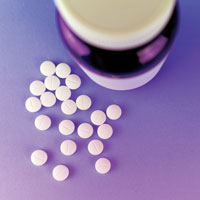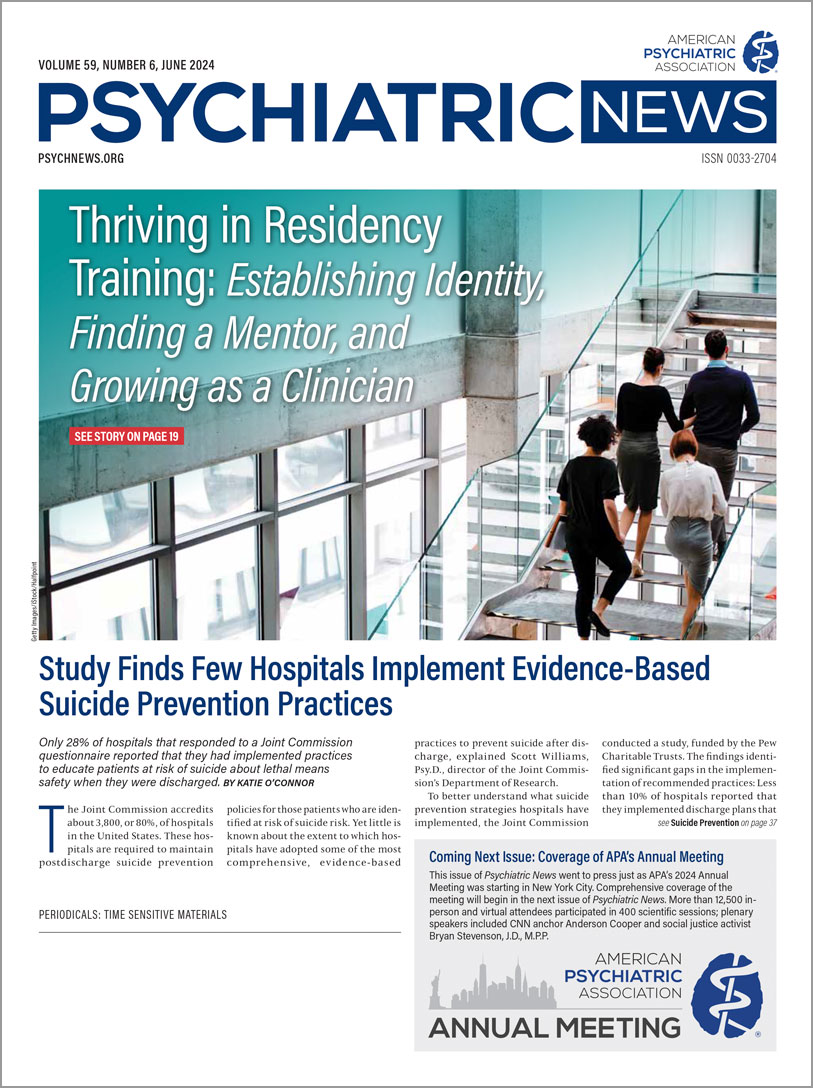Behavioral Activation Effective for Depression in Heart Failure
Behavioral activation can be as effective as antidepressants at reducing depression symptoms in individuals with heart failure, reported a study in JAMA Network Open. Behavioral activation psychotherapy, a form of cognitive-behavioral therapy, encourages patients to engage in activities that they enjoyed before developing depression to improve their mood.
Researchers at the University of California, Los Angeles, and colleagues enrolled 416 adults with heart failure and depression and randomized them to behavioral activation or antidepressants as part of a collaborative care model. Each patient received 12 weekly sessions of behavioral activation (50 minutes) or medication management discussion (15 minutes), followed by three monthly sessions and then contact as needed for an additional six months. All sessions were delivered via phone or videoconference.
Depression severity was measured with the nine-item Patient Health Questionnaire (PHQ-9) at baseline and three, six, and 12 months after starting treatment. At all three post-treatment time points, patients showed a nearly 50% reduction in depressive symptoms, with no difference between groups. At six months, for example, PHQ-9 scores dropped from a baseline of 14.54 to 7.53 in the behavioral activation group and from 14.31 to 8.09 in the antidepressant group. Secondary measures like health-related quality of life, caregiver burden, and mortality rates were also similar in the groups.
“Our findings of comparable primary effects between [behavioral activation and antidepressants] suggest both options are effective and that personal preferences, patient values, and availability of services could inform decisions, thus offering patients, caregivers, and clinicians choices between treatments,” the researchers wrote.
High Emotional Dysregulation May Signal Severe Self-Injury Trajectory
Research has found that people with non-suicidal self-injury (NSSI) progress along three trajectories of low, moderate, or high symptom severity. In a study in the Journal of Affective Disorders, researchers at Harvard T.H. Chan School of Public Health and colleagues have identified emotion-based traits that may identify which trajectory someone will experience.
The researchers recruited 180 adolescents with an average age of 15 years who had been hospitalized for new NSSI. They measured the adolescents’ behaviors in three domains of emotional processing: emotion recognition (understanding facial and social cues), emotion reactivity (how one responds to emotions), and emotion regulation (how one modulates one’s own emotions). The adolescents’ self-harm symptoms were also assessed in the hospital and again at six and 12 months after discharge.
The researchers found that the adolescents’ behavior split into three NSSI trajectories over the year, aligning with previous research. About 90% of the youth were grouped as low frequency NSSI (average of one incident a month); 6% were grouped as moderate frequency NSSI (average 10 to 15 incidents per months), and the remaining 4% were classified as acute high frequency NSSI (average 25+ incidents per month at baseline, but symptoms resolved after six months).
The researchers found that adolescents in the moderate or high frequency NSSI groups had much less ability to accept and deal with negative emotions such as sadness or shame compared with adolescents with low-frequency NSSI. They also found that adolescents with moderate-frequency NSSI had more difficulty meeting goals when distressed compared with those with low-frequency NSSI. Both behaviors are elements of emotional regulation.
“These findings provide preliminary support for evaluating emotion non-acceptance during inpatient hospitalization to aid NSSI risk identification and discharge planning,” the researchers concluded.ects.
Melatonin Ineffective at Reducing Delirium Severity In Older Adults
Melatonin does not reduce the severity of delirium symptoms in hospitalized older adults, reports a study in the Journal of the American Geriatrics Society. Adults who received melatonin did have a slightly shorter hospital stay, however.
Investigators at the Royal Melbourne Hospital in Parkville, Australia, and colleagues recruited 120 hospitalized adults over age 65 who developed excited or mixed delirium and were not scheduled for surgery. The adults were randomly assigned to receive 5 mg melatonin or placebo pill nightly for five nights. The researchers assessed delirium symptoms with the Memorial Delirium Assessment Scale (MDAS) on each of the five intervention days, plus two additional days.
After five days, MDAS scores dropped by 4.9 points among patients taking melatonin and 5.4 points among those taking placebo. In a subgroup of patients who had cognitive impairment prior to their delirium, MDAS scores dropped by 4.9 points in the melatonin group and 7.1 points in the placebo group, suggesting that melatonin may have an even lower impact on delirium in this population.
“The MDAS is a multidimensional delirium assessment scale with elements of cognition, psychomotor arousal, psychiatric symptoms, and sleep,” the researchers wrote. “The effect of melatonin may be on some or one of these components resulting in no significant effect overall.”
The individuals who took melatonin did report slightly better sleep quality than those who took placebo. In addition, the melatonin group also spent less time in the hospital than the placebo group, nine days versus 10 days. Overall, the patients taking melatonin showed no adverse side effects.
Frequent Nightmares Suggest Genetic Links to Other Psychiatric Traits
Nightmares can occur more frequently in individuals with disorders like anxiety or posttraumatic stress disorder (PTSD). While this frequency may be due to the underlying emotional dysregulation in people with psychiatric illness, a study in Translational Psychiatry reports there are also genetic links between nightmares and other disorders.
Researchers at the University of Helsinki and colleagues examined the genomes of 45,255 individuals who participated in various Finnish cohort studies. All of the included studies had surveys that asked people about the frequency and severity of nightmares.
The researchers found that individuals with frequent nightmares also had many genetic variants associated with depression, anxiety, PTSD, insomnia, and neuroticism. Of these, anxiety and neuroticism showed some of the strongest genetic correlation. When the researchers did another genome analysis that removed all individuals who were heavy drinkers (people who drank more than five drinks on at least one occasion per month), the genetic correlations remained but were weaker, suggesting alcohol may be an intermediary in the link between psychiatric traits and nightmares.
In addition, the researchers found genetic evidence that insomnia might be causal in the development of nightmares; that is, continued poor REM sleep increases the negativity of dreams. They acknowledged that a “higher dream and nightmare recall frequency could be explained by a higher number of awakenings during the night, because this frequency gives a greater opportunity to remember a dream upon awakening, including nightmares.”
Depersonalization Symptoms Reduce Chances Of Depression Recovery
Depersonalization—the feeling of being detached or disconnected from oneself or one’s environment—is considered a symptom of several psychiatric disorders such as posttraumatic stress disorder and borderline personality disorder. Though depersonalization is not considered a criterion for major depression, a study in BMC Psychiatry suggests that this symptom may be a useful measurement at diagnosis because depersonalization significantly affects the course of illness.
Investigators at the University Medical Center Mainz in Germany examined data from participants in the Gutenberg Health Study, a large prospective study of middle-aged or older adults aged 35 to 74 years in Germany’s Rhine-Main-Region. They identified 522 adults with clinically significant depression at baseline and co-occurring depersonalization symptoms and 599 adults with clinically significant depression and no depersonalization symptoms. Clinically significant depression was defined as a score of at least 10 on the nine-item Patient Health Questionnaire (PHQ-9).
At baseline, the adults with depersonalization symptoms reported significantly poorer mental and physical health than those without, including higher levels of social anxiety, more interpersonal problems, and greater chest pains.
At the five-year follow-up, the adults with depression who also had depersonalization had worse outcomes. Almost 60% still had clinically significant depression, compared with roughly 40% of adults with depression but no depersonalization. After adjusting for variables like age or socioeconomic status, the investigators calculated that the presence of depersonalization more than doubled the risk of persistent depression in adults. Meanwhile, only about 7% of adults with depersonalization achieved depression remission (a PHQ-9 of less than 5), compared with about 16% of those without depersonalization. ■





